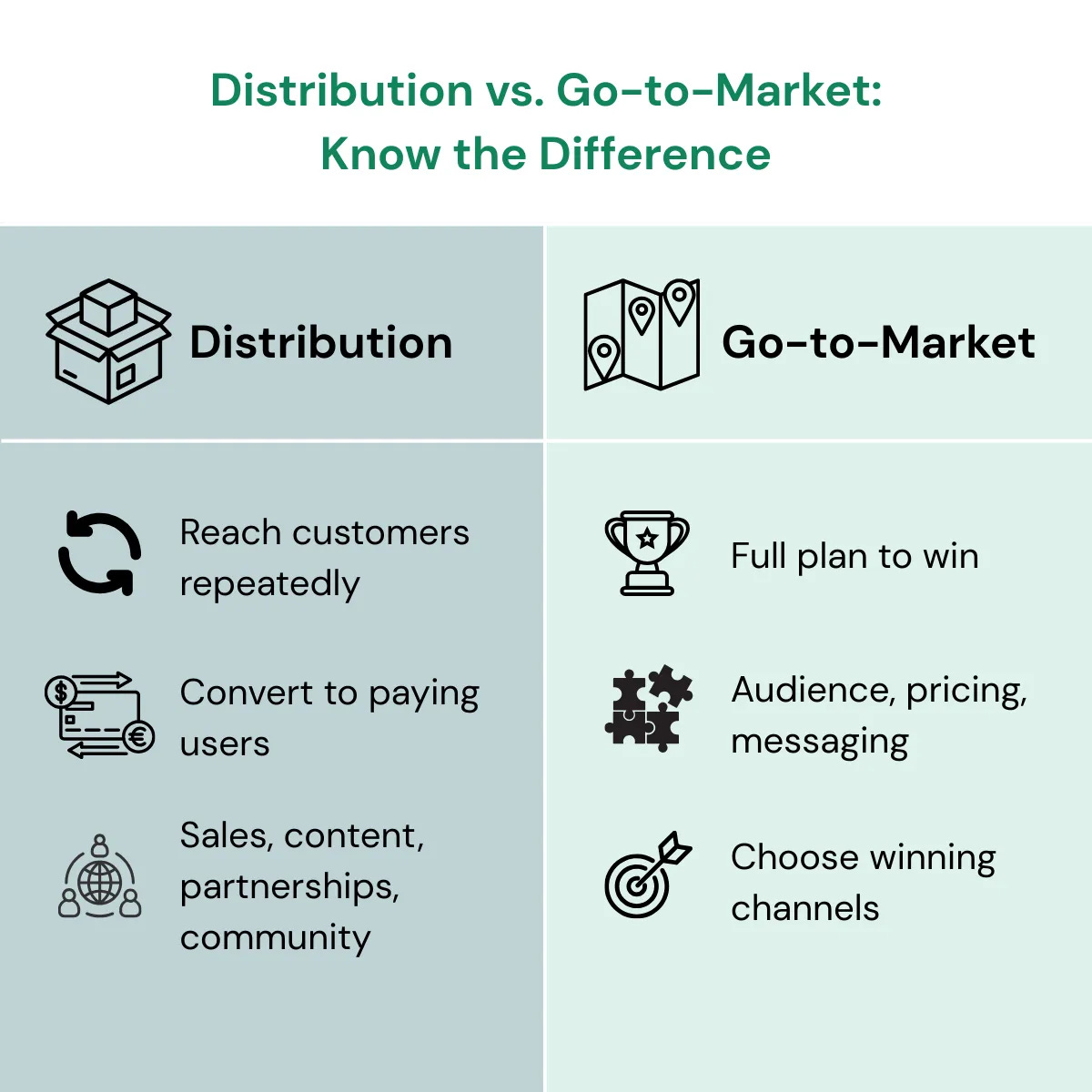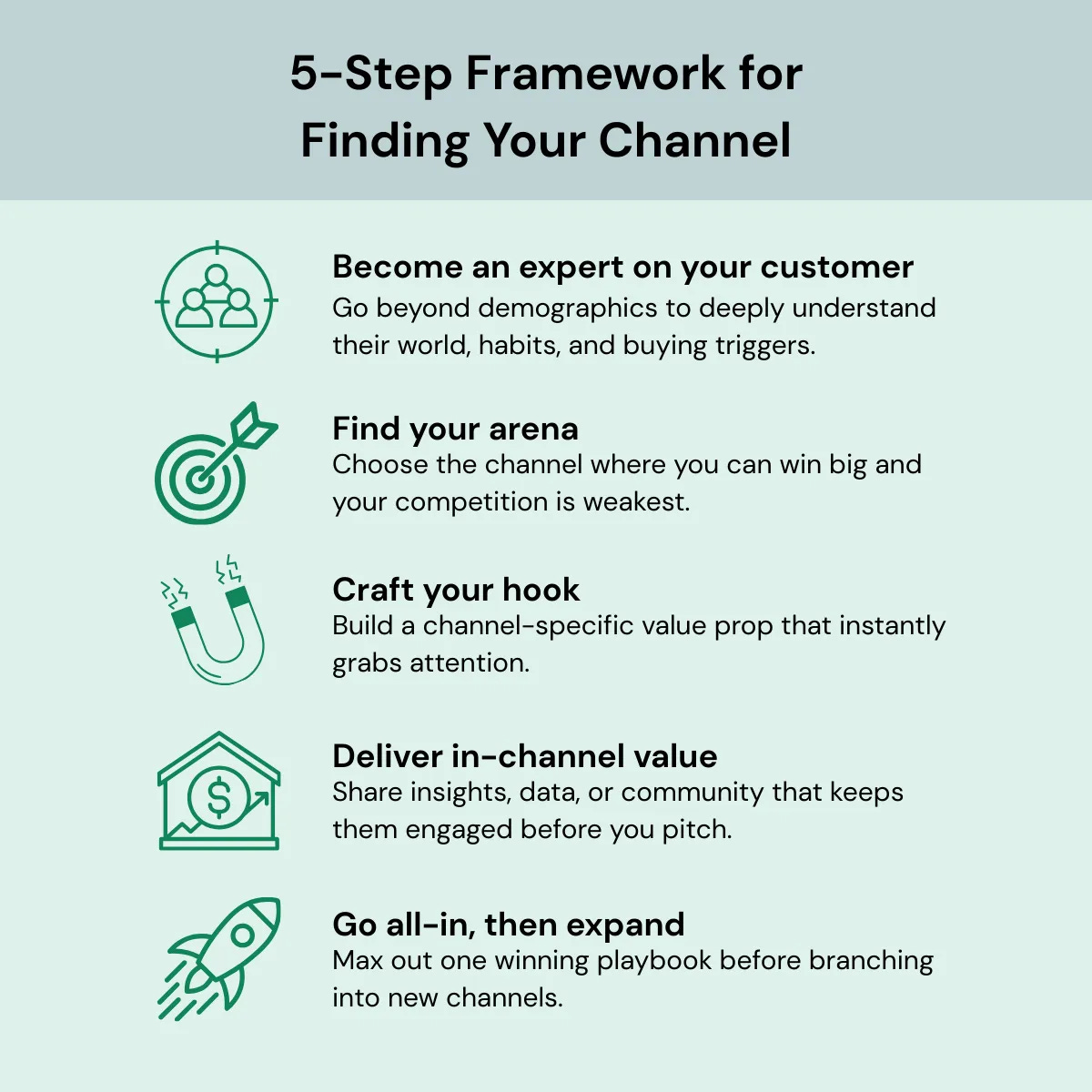Distribution Is the Final Moat
A guest post by VC firm GTMfund on the playbook investors wish every founder followed
The founder's journey has always followed two simple rules:
No customers, no business
No growth, no capital
While those rules haven't changed, the arena has. Today, the bar is much higher…
Looking at the latest benchmarks from firms like a16z, the trend is clear. The most successful founders are building revenue engines in parallel with their product, and the results are remarkable:
The new benchmark for elite startups is hitting $1M in ARR in under 9 months.
The year after, they're nearly tripling in size, with 192% annual growth.
They accomplish this with unprecedented capital efficiency, often operating with a Burn Multiple below 1.0, meaning they generate more than a dollar of new revenue for every dollar of cash they burn.
That speed and efficiency means you can’t afford to wait. You need a distribution strategy from the founding moments of the company.
This raises the key question:
What are these founders doing differently?
Distribution vs. Go-to-Market: Know the Difference
First, it’s important to understand what distribution means and how it fits into the greater go-to-market strategy.
Distribution is your system of channels for consistently reaching your target customers and turning them into paying users. Think of it as the pathways your product travels to get into a customer's hands. These pathways can include: direct sales, content, partnerships, community, and more. Distribution answers the question: "How do we get our product in front of the right people, over and over again?
Go-to-market (GTM). Distribution is a critical component within a GTM strategy. GTM is the full blueprint: who you're selling to, your pricing, your messaging, and which distribution channels you'll use to win.

Why a Great Product Isn't Enough
As investors, we see companies with solid products get beaten by competitors with superior distribution all the time.
A superior distribution strategy can beat a comparable (or even slightly better) product. It happens all the time.
Gong vs. Clari is the classic example. The products were similar, but Gong’s aggressive go-to-market execution and powerful brand made them the undisputed leader. They didn't just outsell Clari; they defined the entire category and framed their competitor as a discount alternative.
This is accelerating in AI. A startup can generate massive early buzz, only to be lapped months later by a competitor who nails a specific viral loop or channel more effectively. In today's market, the company that reaches the customer best often wins.
It all comes down to a shift in mindset. The best founders treat distribution as a core part of their product from day one, not as a problem to solve later. They build a playbook before they even hire a sales team.
Here’s what that playbook looks like in action.
The "One Channel" Playbook
The founders who nail distribution early don't try to be everywhere. They find one, maybe two, channels and absolutely crush them by building a playbook that is highly specific to their customers.
Example 1 we’ve seen: A company selling to HVAC owners found their customers weren't on LinkedIn; they were in niche Facebook groups. The founders embedded themselves in these communities, shared trade-specific memes, and became admins. They built authority from the inside out, creating a pipeline that felt authentic, not transactional.
Example 2 we’ve seen: Another founder identified the second most popular podcast in their vertical. Instead of just buying ads, they brought the host on as an advisor for a small amount of equity. Overnight, that podcast became a trusted, organic lead-generation channel that no amount of marketing spend could have replicated.
There are hundreds of other examples too.
Finding your "one channel" isn't a marketing problem; it's a customer-understanding problem. If you don’t know where your customers live, you don't know them well enough yet.
The right channel is a direct reflection of your customer's daily reality.
Are you selling to restaurant owners? They live on the phone, not in their email inbox. Your playbook is calling them directly.
Targeting pharma leaders? They're on LinkedIn, trying to figure out how AI will impact their industry. Your playbook is to become the go-to thought leader answering that exact question.
It starts with customer specificity. Find out where they spend their time, what they worry about, and who they trust. Then, build a strategy to meet them there in a way that provides immediate value.
A 5-Step Framework for Finding Your Channel
Here is a simple, five-step framework for finding and winning your first distribution channel.
1. Become an expert on your customer
Go deeper than demographics. You need to obsessively understand your customer's world. Where do they spend their time online and offline? Who do they trust for advice? What podcasts do they listen to on their commute? How do they actually make buying decisions?
2. Find your arena
Once you know where they are, find an arena where you can realistically win. It doesn’t have to be an undiscovered channel, but it should be a place where competitors are weak or your unique approach can cut through the noise.
3. Craft your hook
You need a compelling value proposition tailored specifically for that channel. This isn't your marketing tagline; it's the "hook" that will grab their attention in that context. For Zoco, the hook was showing med spas the exact search volume they were missing.
4. Deliver in-channel value
Provide unique value within the channel itself, before asking for anything in return. Create a high-signal community, offer proprietary data, or share incredibly relevant insights. Give them a reason to pay attention.
5. Go all-in, then expand
Once a playbook works, double down until you see diminishing returns. Master it and own it. Only then should you begin to diversify.

A common question is whether it's better to go where no one else is. Not necessarily. The goal isn't to find an empty channel; it's to find a channel where you can win.
Sometimes that means entering a crowded space but with a more creative and specific approach. While your competitors are fighting over broad keywords, you can win by dominating a niche Facebook group, owning a hyper-local search term, or becoming the go-to authority at a small industry event.
The question isn't "Where can I be first?" but "Where can my unique approach allow me to build authority the fastest?"
The Carrot and the Stick
Ultimately, this creates a classic carrot-and-stick scenario for founders.
The Stick: The expectations for growth are higher and faster than ever before. You can no longer afford to figure out your go-to-market strategy after you've built your product. A sharp, deliberate plan for distribution from day one is now a requirement for survival.
The Carrot: You have more powerful tools, data, and creative channels at your disposal than any generation of founders before you. Small, scrappy teams can now run plays that used to require Series B funding and a full marketing department.
The founders who win in this era will be those who see this reality clearly. They will identify one high-impact channel early on and execute on it with relentless focus.
Distribution is the final remaining moat. Investors prioritize a startup’s go-to-market strategy, including distribution, when evaluating whether or not to back a company. Our hope is that this playbook can help more founders build distribution, get funding, and win.
This guest post was written and edited by Paul Irving (COO),
(SVP) and Max Altschuler (GP) from VC firm GTMfund.Highly recommend you check out their newsletter and podcast under their media brand,



This post is so important for solopreneurs, indie hackers and founders to read and implement. Far too many people wait until the product is good to go before they try to figure out how to reach potential customers. Waiting to figure this out is nothing short of waiting to fail.
The scale on which Gary Vaynerchuk has been right on all of this across multiple inflection points and with the specific tactics required to sell through is stunning. You should interview him.